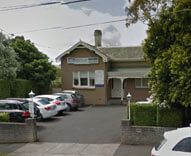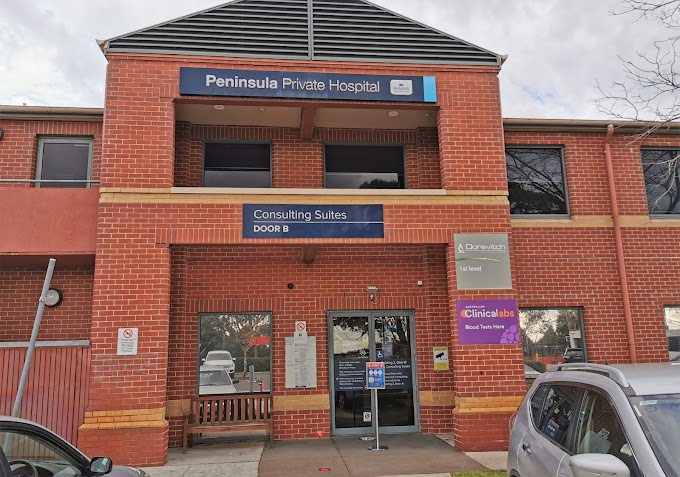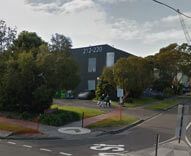Carpal Tunnel Syndrome (Median Nerve)
The carpal tunnel is an area near the front of the wrist that encloses the median nerve, one of the major nerves of the hand as well as a number of adjacent flexor tendons. The tunnel is a rigid structure surrounded by bones and a ligament called the flexor retinaculum (or transverse carpal ligament), which acts as a pulley for the underlying tendons to the fingers. When pressure builds up within the tunnel because the tendons surrounding the median nerve are inflamed, there is pressure on the nerve. This produces symptoms of numbness or tingling sensations as well as pain in the areas of the hand controlled by the median nerve, namely the first three fingers and thumb – a condition known as carpal tunnel syndrome. Carpal tunnel syndrome, which is a compressive neuropathy, requires a thorough hand assessment by a hand surgery specialist to verify the diagnosis as multiple levels of nerve compression are possible.
Carpal tunnel syndrome can be caused by any number of factors, including repetitive wrist and hand movement (generally work-related), injury to the hand, awkward sleeping positions, arthritis, obesity, diabetes, and more. Patients who are experiencing abnormal feeling in their fingers, particularly at night, may be suffering from the early stages of carpal tunnel syndrome. Anyone with an office job that requires significant repetitive use of a computer keyboard is at a higher risk for developing carpal tunnel syndrome.
Carpal tunnel hand surgery – Candidates
Carpal tunnel syndrome can vary in intensity. Nerve compression symptoms can sometimes be alleviated with anti-inflammatory medication, steroid injections or wrist splinting. However, if these conservative measures prove to be ineffective, then surgical decompression of the median nerve, “carpal tunnel release,” may be the most effective treatment option.
During a hand surgery consultation with Dr. David Ross at one of our Melbourne offices, patients will have their wrist and hand examined for strength, function, and sensitivity to ensure a correct diagnosis. Usually electrodiagnostic testing is also arranged in the form of a nerve conduction study, which will indicate the presence of an electrical nerve conduction block, significant in carpal tunnel syndrome. As both a diagnostic and therapeutic procedure, Dr Ross will usually recommend a steroid injection into the region of the carpal tunnel. In almost all patients with carpal tunnel syndrome due to median nerve compression this treatment modality will be effective in controlling symptoms and confirming the diagnosis. If the injection not of benefit or is beneficial only for a short period, either an alternate diagnosis should be considered or surgical intervention is advised. After a thorough diagnostic session, Dr. Ross may recommend a procedure known as carpal tunnel release.
Carpal Tunnel Release – Surgery Procedure
Carpal tunnel release is a surgical procedure on the hand, which decompresses the median nerve at the level of the carpal tunnel. The procedure can be performed using a number of different techniques, depending on the clinical circumstances. Dr. David Ross undertakes 4 different surgical techniques to decompress the median nerve at the carpal tunnel and can advise which would be most applicable in your situation. The surgery can be undertaken either under local or general anaesthesia in hospital or a day surgery facility, requiring only a short 2-3 hour stay.
The procedure can be undertaken as a traditional open carpal tunnel release, which is recommended in severe or recurrent nerve compression syndromes, but has the disadvantage of longer recovery and higher complication rate. Endoscopic carpal tunnel release involves a smaller incision and therefore more rapid recovery, but risks direct damage to the nerve as the endoscope is inserted into the carpal tunnel. Dr. Ross’s favoured procedure is the minimal access carpal tunnel release, where the carpal ligament is divided under full vision through a 2cm incision in the palm, which also allows a rapid recovery and low complication rate. Finally, in heavy manual workers, the median nerve can be decompressed and carpal ligament preserved by flexor synovectomy procedure, allowing preservation of grip strength.
Carpal tunnel hand surgery is performed as a day surgery procedure allowing patients to return home the same day. There may be some mild discomfort following surgery, but recovery is quick and normal activities can be resumed almost immediately. In most cases a dressing is left over the incision line for 2-3 weeks to ensure full healing and maximal functional outcome. If the transverse carpal ligament is divided by any technique it will be about 6 weeks before the grip strength returns to normal. For most patients, there will be an immediate improvement in their nerve compression symptoms.
If you have been diagnosed with carpal tunnel syndrome, you may be a candidate for carpal tunnel release hand surgery. Contact plastic surgeon David Ross at his Melbourne practice to schedule a consultation.
Other Nerve Compression Syndromes
As well as carpal tunnel syndrome there are a number of other areas of nerve compression in the upper limb. These all occur at points where there is dynamic compression of nerve against unyielding structures or excessive movement of nerves through normal structures. Each of these syndromes will cause symptoms similar to carpal tunnel syndrome, with pain, numbness and tingling in the nerve distribution, which can progress with increased severity to permanent muscle weakness and sensory loss. Many of these syndromes must be differentiated from carpal tunnel syndrome by their clinical features and this is where an experienced hand surgery specialist can make that diagnosis.
Pronator Syndrome (Median Nerve)
Pronator Syndrome is an entrapment of the median nerve in the proximal forearm, just past the elbow due to compression of the nerve by fibrous bands and muscle fibres against the underlying bone. Its symptoms are similar to carpal tunnel syndrome but differences are that the symptoms are more often brought on by manual work (due to muscle contraction in gripping and repetitive hand use) and relieved by rest. Often there is more proximal pain and tenderness not seen in carpal tunnel syndrome. It is quite common for this condition to occur concurrently with median nerve compression at the carpal tunnel.
Electrodiagnostic tests often cannot distinguish this syndrome from carpal tunnel syndrome, although a conduction block will be observed. Provocative clinical tests and features in the history of the condition will confirm the diagnosis. Treatment involves avoidance of aggravating activities, particularly gripping and repetitive hand use. Splints and steroid injections are less likely to be effective and hand surgery is more often required to remove anatomical causes of compression. Usually surgical decompression of the median nerve at the pronator teres muscle insertion will effectively and definitively control these symptoms.
Cubital Tunnel Syndrome (Ulnar Nerve)
Cubital Tunnel Syndrome is a nerve compression syndrome affecting the ulnar nerve at the elbow. Its symptoms differ in distribution with tingling and numbness mainly of the small finger of the hand. Initially the symptoms are intermittent but with progression there is weakness of the small muscles of the hand resulting in clumsiness and reduced hand dexterity. The symptoms are usually caused by overuse and cumulative trauma resulting in scarring around the nerve, reducing natural nerve glide on elbow movement and resulting in dynamic nerve compression, due to inflammation and swelling of the nerve, “ulnar neuritis”.
It should also be noted that the ulnar nerve can also be compressed in the wrist (in Guyon’s Canal) however this is quite uncommon and usually caused by external compression from an adjacent tumour rather than an overuse syndrome. Often the presentation in this situation is of an ulnar nerve palsy, with the characteristic claw hand and sensory loss in little and ring fingers.
Electrodiagnostic tests are helpful not so much indicating the severity of the nerve compression but localising the conduction block to the elbow and cubital tunnel.
Treatment of ulnar neuritis at the elbow caused by repetitive strain injury is usually rest and elbow splinting to reduce tension and localized pressure from the inflamed nerve. Steroid injections can also be beneficial as they can act to reduce oedema and inflammation around the nerve in the cubital tunnel. The injection is also beneficial in confirming the diagnosis and temporarily or permanently alleviating the nerve compression symptoms. In more severe and longstanding cases surgical decompression of the ulnar nerve in the cubital tunnel in combination with splinting and rest should permanently relieve the nerve compression symptoms. Some surgeons advocate transposition of the inflamed nerve from the cubital tunnel to the flexor compartment of the forearm, however this procedure is not usually necessary in a primary surgical case. In situations of recurrent scarring and partial devascularisation of the ulnar nerve, transposition may be warranted.
Radial Nerve Compression
Radial Nerve Entrapment Syndromes occur from compression of this nerve in the proximal forearm.
Superficial radial nerve syndrome occurs where the nerve passes between the extensor muscles in the forearm and results in pain and numbness over the first webspace of the hand. It is aggravated by pronation of the hand and can be difficult to distinguish from DeQuervain’s disease. Treatment involves rest, splinting, steroid injections and rarely surgical decompression of the nerve.
Posterior interosseous nerve compression occurs when this nerve is trapped in the radial tunnel (between the two heads of supinator muscle and the arcade of Frohse) in the proximal forearm. It is aggravated by forced supination of the hand and is characterised by tenderness over the nerve, pain in the proximal forearm and possibly weakness of digital extension. It can be difficult to distinguish from lateral epicondylitis (tennis elbow) Again treatment revolves around rest splinting and occasionally surgical decompression of the nerve.
Thoracic Outlet Syndrome
Thoracic Outlet Syndrome results from compression of the brachial plexus nerves which run from the spine in the neck to the area of the armpit (axilla) where they enter the upper arm. Often, like other overuse syndromes, this condition results from repetitive strenuous work in awkward positions. Other causes can be a whiplash neck injury or fall on the shoulder. Symptoms vary depending on the nerves involved but usually feature pain, numbness, and muscle weakness in various distributions. Trigger points in the neck are common and provocative tests will confirm the diagnosis. Treatment is usually conservative involving physiotherapy, neck traction and muscle relaxants. Surgical intervention is rarely recommended but involves the removal of cervical rib or scalene muscle to alleviate the compressive force on the nerves.




